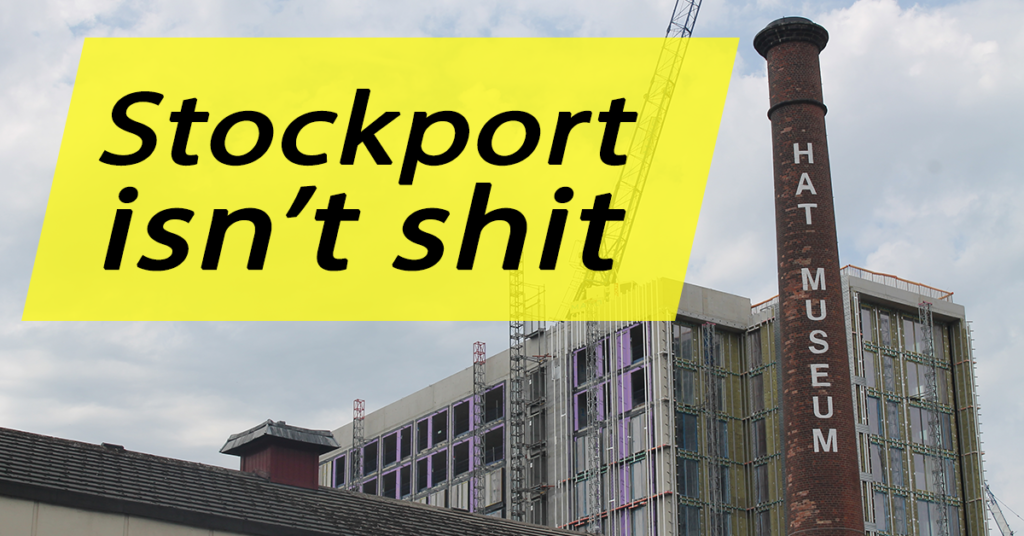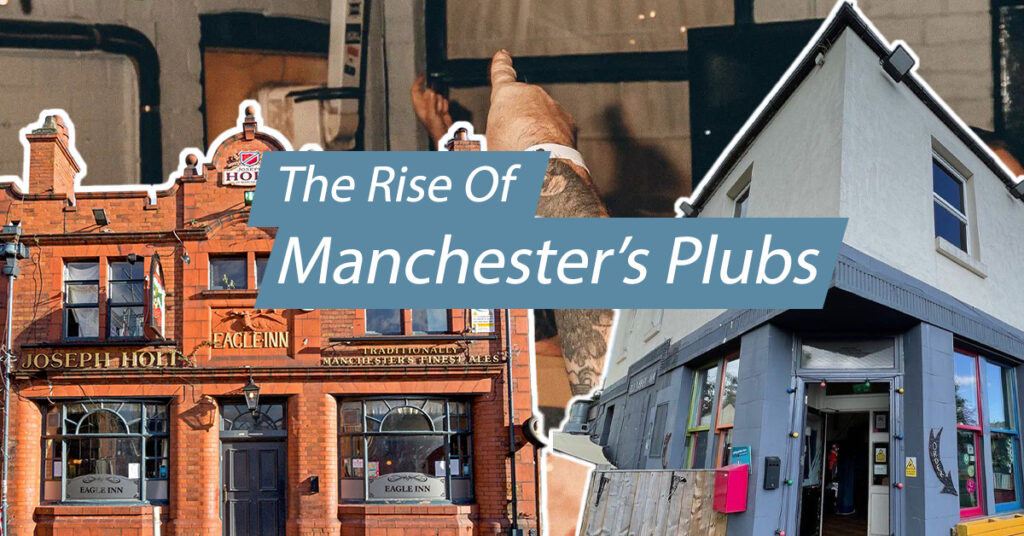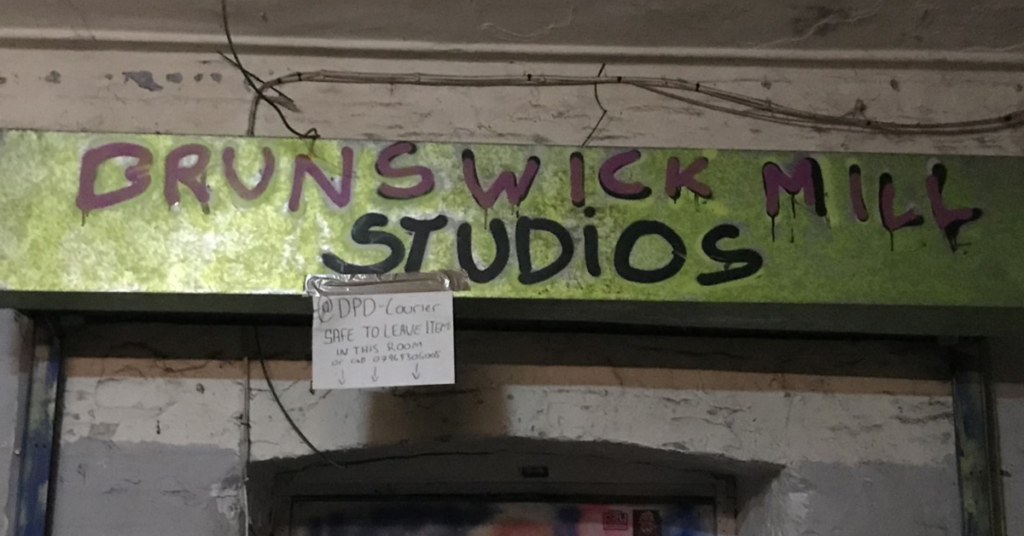
Written By – Liam Donoghue
AMF Head Honcho – Author Bio
AMF founder, resident, writer, and podcaster.
Facebook – Instagram – Soundcloud – Youtube
A call to action for all those concerned about the lack of green spaces in Manchester city centre.
There’s a park in Manchester less than 30 minutes walk from Piccadilly Gardens. Sand Hills sits between Collyhurst and Ancoats a short walk up Rochdale road. The park isn’t a small one either, yet has been left derelict and is overgrown with weeds and rubbish.

No other city in the UK seems to have such a problematic relationship with inner city green spaces like Manchester does. In my eyes there’s two reasons for this.
Manchester’s industrial past can be evidenced everywhere in its architecture. From the canals to railway arches the city screams industry. Populated by new money upstarts during the industrial revolution meant the wealthy classes of the city made their money in factories and industry and not through the traditional means of the landed gentry.
This could go some way to explaining the lack of green space we now see in central Manchester. A city that was so concerned with Victorian factories and canals has no time to think about parks.
Cranes also now dominate Manchester’s skyline whilst parks in Manchester are left marginalised. New build flats are pushing out clubs and creative hubs from the city centre. The 30 minute walk from Piccadilly to Sand Hills is punctuated by around 7 construction sites. The Angel Pub now beleaguered by builders.
In its drive to create endless residential accommodation in a 4 square mile radius of the city centre I believe it’s completely plausible that the city council either doesn’t care about creating well kept parks in Manchester or their happy to leave green space in the city center dilapidated until the developers role in.
Why is this space important?
Green space and public space are a vital part of any city. Having a place within the concrete jungle to relax and take a minute away from the cars and noise is important. It both stimulates the imagination and also allows the mind a time to rejuvenate.
Parks are also focal points for social activity. Community groups, runners and meet ups etc. Denying Manchester’s population these spaces means it’s harder for artists and musicians to congregate in idea inspiring environments.
Furthermore if Manchester continues its endless development the city runs the risk of creating a surplus of residential space yet no reason to live their. Surrounded by a sea of new builds flats with no amenities or social centres sounds like a bleak prospect to me.
Sand Hills Park
I first came across Sand Hills park when trying to scout out a building for a NYE rave. It was mid November and the weather was terrible. Classic grey Manchester drizzle and a biting wind. I initially ran into the park to hide under a tree as the rain turned itself up a notch.
Now, admittedly, nowhere in weather like that is going to look nice. And the scene was only made worse by the rubbish. But I couldn’t get over how big the park was, and I was so surprised that I live about 800 meters down the road and had no knowledge of it.
When the rain subdued I left and I almost doubted the park actually existed. Was I looking back at the space through rose-tinted specs. I only spent around 4 minutes in there under a tree and your mind can skew them memories really easily.
I felt that any green space of that size must be being used. You’d hope so, especially when the weather’s nicer. So I returned to the park in April and i’m glad to say, firstly, it does exist. But secondly, it was still as empty and derelict as when i saw it in winter.
Although my April trip was done under a beaming sun and the weather did show the park off in its best light. The fact it remains conspicuously empty is something I feel the city of Manchester needs to remedy.


Sand Hills can be a bit hard to navigate. It’s split into two sections by a large victorian stone bridge which now has tram tracks on it. In the pictures above this bridge is behind me and this is the view up the park. There’s a nice large gate at the other end which is sadly dilapidated. The low valley is flanked by two paths that lead into the woodland in the corners of the photo’s. These paths initially look really inviting until you get under the canopy and see a deluge of empty Kestrel cans. There wasn’t even a lone runner making the most of the empty paths.
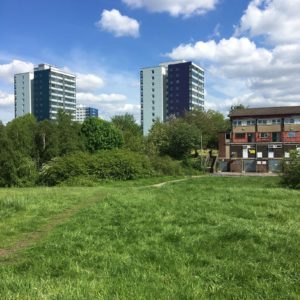
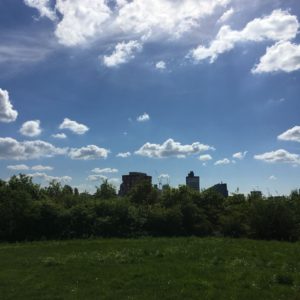
On the other side of the rail bridge is a grassy knoll with a nice sculpture on the top of it (I forgot to photo it, sorry). The third photo shows how close this green hill is too Rochadale Road and the forth is a view from the top back into town. You can see the new Co-op Building just poking above the tree line.
All in all the space is quite remarkable and definitely worth checking out.
What can be done to save and utilise spaces like this?
I wish I had a definitive answer on how to solve this problem. There’s steps been taken in Greater Manchester where more trees are starting to line the streets as a method to reduce flooding. A small step but any foliage on the streets should be seen as a welcome addition to the city.
Personally, I feel Manchester could make inroads in to solving this problem by building out instead of up. If the ‘powerhouse’ of the North wants to emulate London it doesn’t need to build all its residential housing within four miles of the city centre. Extending the tram lines out in all directions similar to the Oldham line would create a de-nuclearised centre.
Not only would this spread wealth outside of the centre and south Manchester it would make the city smaller and allow for green spaces and creative hubs to be accessed more easily from anywhere within the city. This (you’d hope) would allow developers to build further afield and we, as a city, could choose to reserve certain spaces for parks instead of just relentlessly bulldozing our way into grey oblivion.
Thanks for reading, follow us on Facebook and spread the love if you like what you read 🙂
For more article and mixes head to our homepage.



